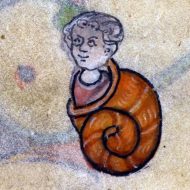Ben Jonson, whose full name is Benjamin Jonson is born June 11, 1572 in England and died August 6, 1637 in London. He is generally seen as the second most important English writer, after William Shakespeare. Some of Jonson’s plays are Every Man in His Humour (1598), Volpone (1605), The Silent Woman (1609), Epicoene; or The Alchemist (1610), and Bartholomew Fair (1614). Ben Jonson did not have an opportunity to go to a university but it did not stop him to get a great education. He managed to develop himself in various fields such as poetry, acting, theatre, continuity writing…
Jonson’s Bizarre Way of Writing Poetry
Ben Jonson received a good education at Westminster School. In a way, the education Janson received in Westminster School as a poet was unfortunate. He was taught firstly to write prose exercises and after to turn them into poetry. Because of the education he gained the habit of trying to express unpoetical ideas in verse. This weird habit makes Jonson’s style of poem’s more interesting than it normally is.

The title of the book is “Bartholmew fayre’’ by Ben Jonson. The book was first printed in 1631, it was first published by the bookseller Robert Allot. The play first acted in River Tames, October 31 1614 and dedicated to King James. The play ‘Bartholomew Fair’ is a comedy play which gives its messages through the characters by using satirical phrases. The main focus of the play is the Bartholomew Fair which is an enormous fair that takes place in London. The most striking part of the play Bartholomew Fair, to me is the one character, Ursula, who I believe represents the whole fair by herself. In the following lines:
I am all fire and fat . . .
I shall e’en melt away to the first woman, a rib, again, I am afraid.
I do water the ground in knots as I go, like a great garden-pot; you may follow me by the S’s I make (Jonson, 2.2.49-51)
She is describing herself as ‘fire and fat’. The word she used ‘fat’ can be seen as a representation of the people’s eager to eat in the fairs since there are many places to attract their hungriness. Fair’s in a way cause people to get more fat. In a different perspective, the word ‘fat’ can represent the fullness of the fair’s with all the chaos people make and the noises all around. There is an overdose of people that creates a ‘fat’ image of the fairs. The second word ‘fire’ represents the fair’s effort to strike people’s attention with all the lights also it can be seen as the glorious side of the fair’s that creates an illustration of a passionate place like a fire. The second sentence represents the fear of being lost in the crowdedness of the fair since it mentions the fear of turning to the first women and a rib at last. In a way losing the function and becoming useless in the crowd of the fair like a rib. The last sentence’s ‘follow me by the S’s I make’ stands for the attractiveness of the noises in the fair’s that grab people’s attention and make them go where the noise is. To my perspective, Ursula is the most well-thought character in the play because she represents the main focus of the play which is the Bartholomew Fair.
Bibliography
Jonson, Ben. Bartholmew fayre. London: Printed by I.B. for Robert Allot. 1631.
Peri Naz Akbaş
